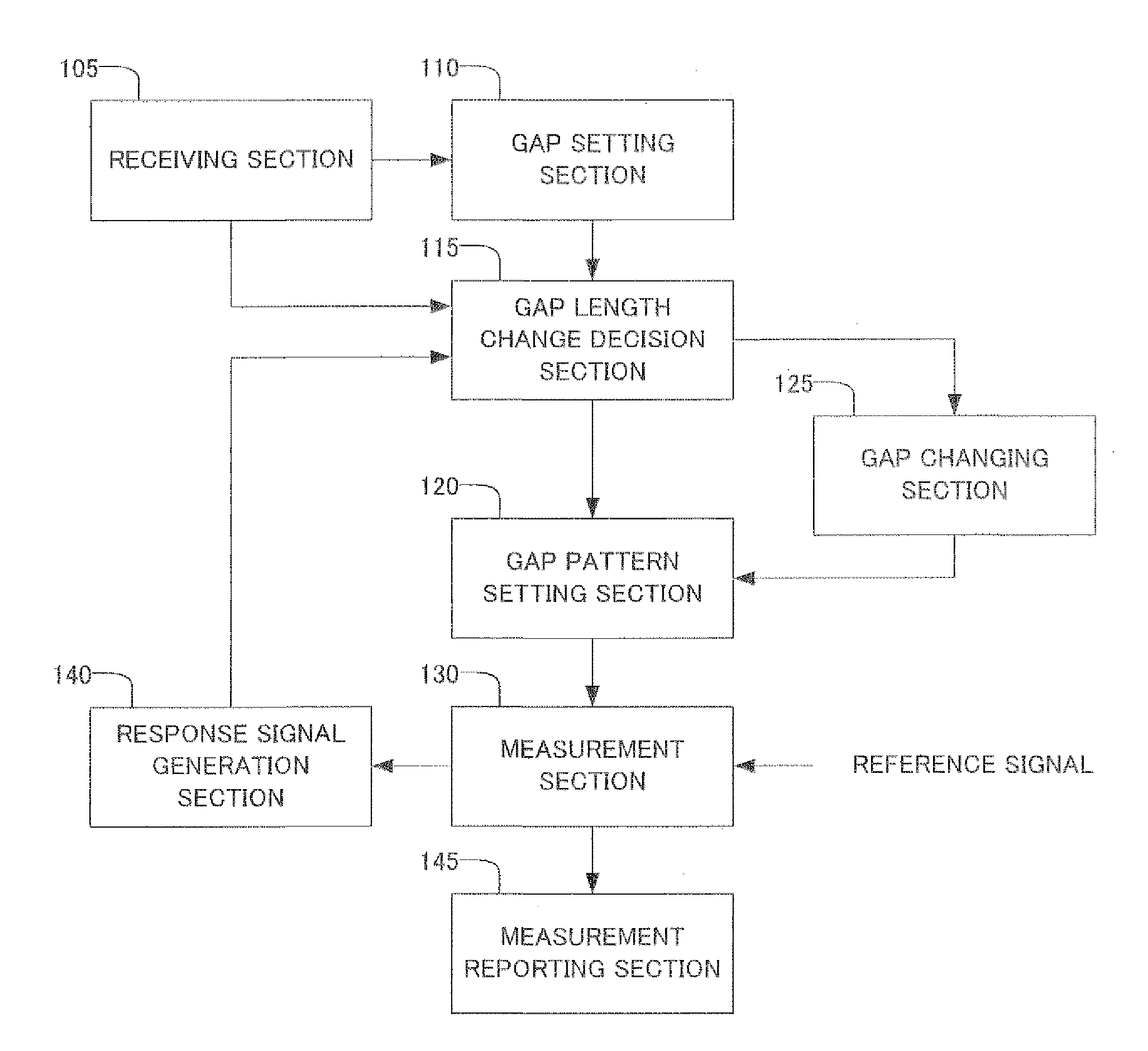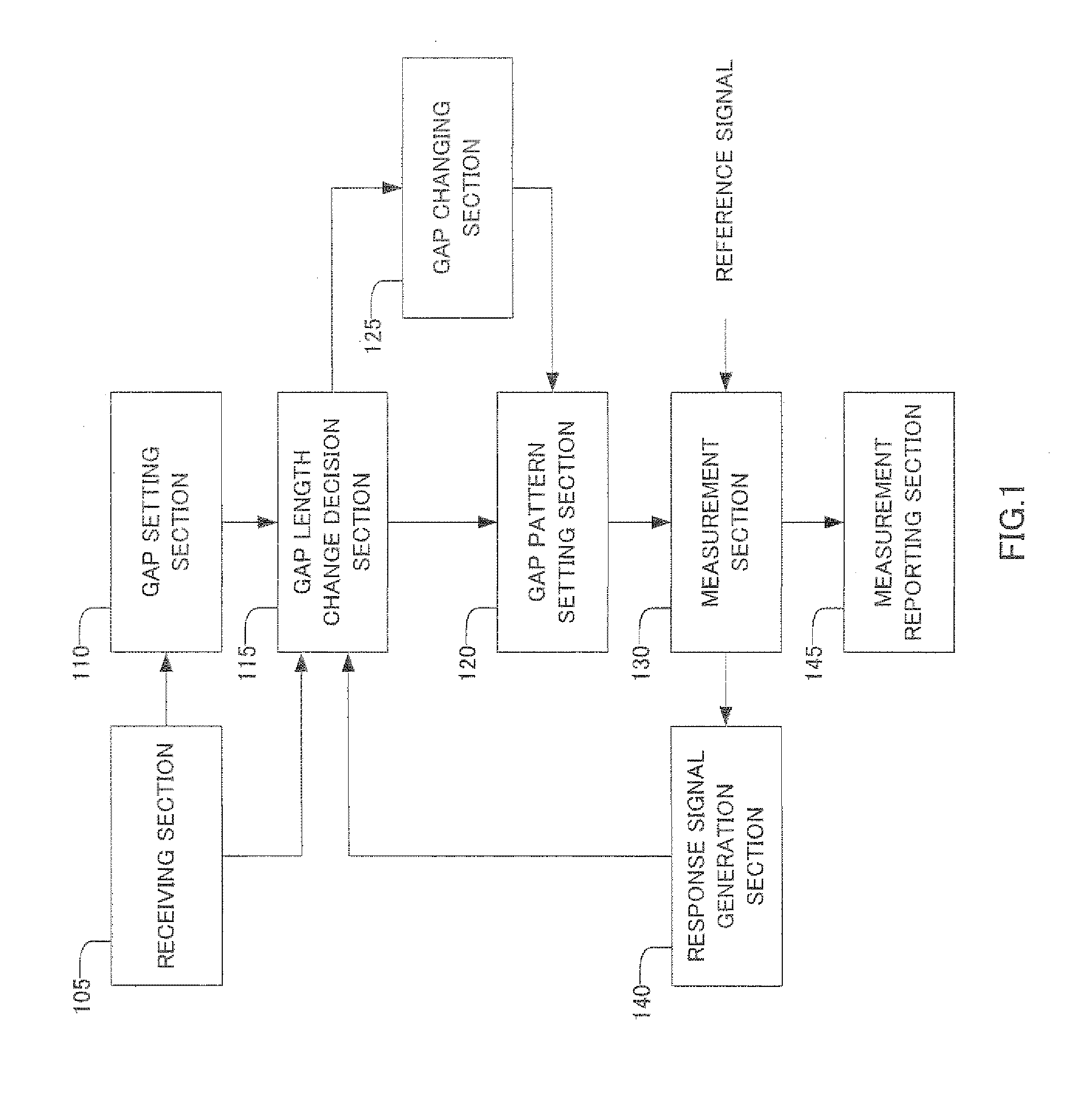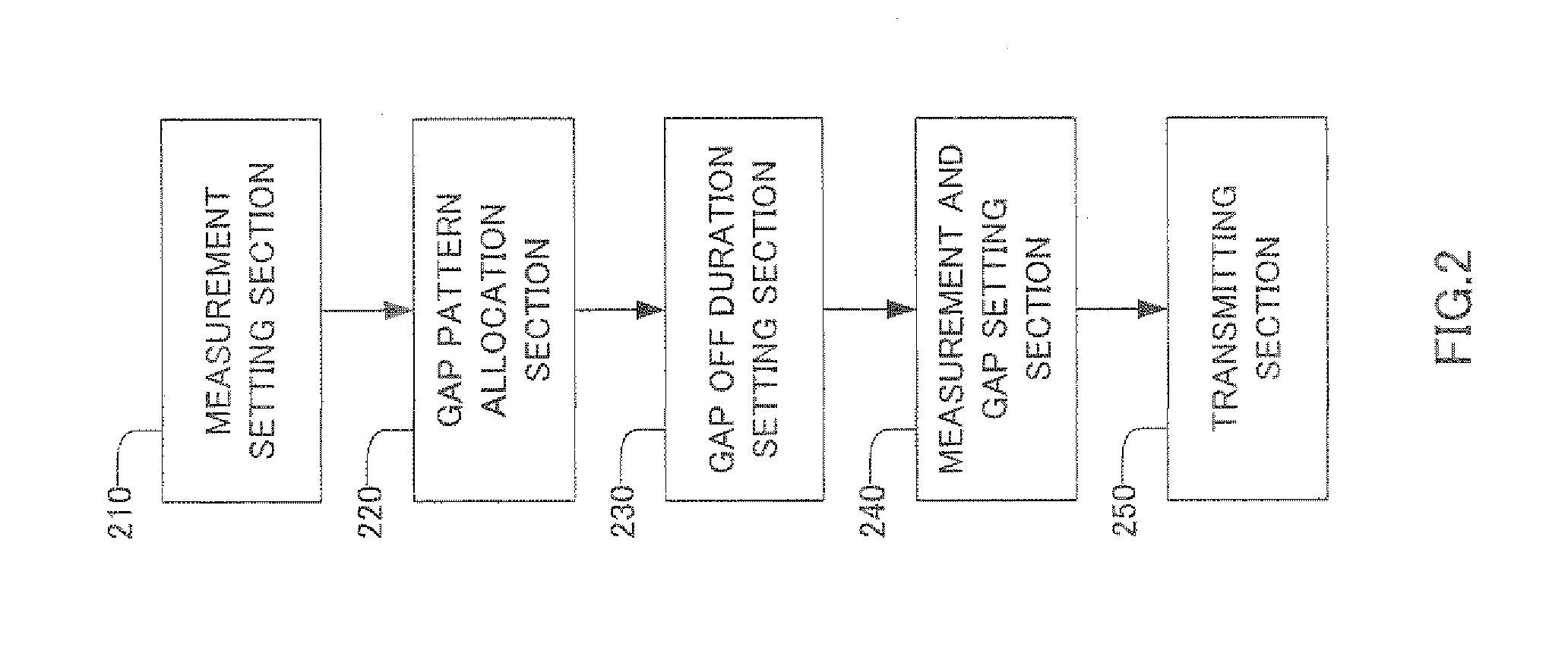Radio communication terminal device and gap allotting method
a technology of radio communication terminal and allotting method, which is applied in the field of radio communication terminal apparatus and allotting method, can solve problems such as service quality degradation, and achieve the effect of reducing the number of retransmissions and fast completion of measurement processing
- Summary
- Abstract
- Description
- Claims
- Application Information
AI Technical Summary
Benefits of technology
Problems solved by technology
Method used
Image
Examples
embodiment 1
[0031]The configuration of the mobile station according to Embodiment 1 of the present invention will be explained using FIG. 1. In FIG. 1, receiving section 105 receives measurement setting information and gap control setting information transmitted from the base station via dedicated control signaling, and outputs the received information to gap setting section 110.
[0032]Here, measurement setting information refers to information to measure a cell to which the mobile station belongs and neighboring cells, and shows a type of measurement (single-frequency measurement, inter-frequency measurement or inter-system measurement), a method of measurement (whether or not the method is based on intensity of a signal to be received, whether or not interference is considered and so on), report timing (at which timing measurement result is reported) and so on. Further, gap control setting information is information for creating gaps and includes timings to start a gap, the lengths of gaps, in...
embodiment 2
[0071]With Embodiment 2 of the present invention, a case will be explained where the mobile station assigns priorities to retransmissions using the gap off duration “G_Off_Duration.” To ensure connections between the mobile station and the base station in cases where the mobile station is present at an edge of a frequency area currently connected, where the mobile station moves fast and so on, gaps are needed to perform inter-frequencies and inter-system measurement.
[0072]FIG. 5 shows signaling for assigning priorities to gap allocation and retransmission according to Embodiment 2 of the present invention. In this figure, the mobile station sets up the bearers to provide services, and then sets up the measurement setting information and gap control setting information. Further, at this time, information showing priorities of bearers and priorities of measurement carried out by measurement setting information and gap control setting information are transmitted to a mobile station via...
embodiment 3
[0083]FIG. 9 shows how the maximum value of the average number of retransmissions is signaled according to Embodiment 3 of the present invention. In this figure, the base station transmits a maximum average retransmission count parameter (hereinafter, “Max_HARQ_Re-transmission”) via dedicated control signaling. This Max_HARQ_Re-transmission is processed in the mobile station and is used to change the scheduling method.
[0084]Specifically, when the average number of retransmissions in a given duration is greater than Max_HARQ_Re-transmission, the mobile station changes from a persistent scheduling method to a dynamic scheduling method, for example. Basically, with the persistent scheduling method, transmission and reception are performed at specified timings. Here, if transmission and reception timings are reduced due to use of gaps, resources used for transmission and reception are further reduced.
[0085]Then, the mobile station adopts the dynamic scheduling method and performs transm...
PUM
 Login to View More
Login to View More Abstract
Description
Claims
Application Information
 Login to View More
Login to View More - R&D
- Intellectual Property
- Life Sciences
- Materials
- Tech Scout
- Unparalleled Data Quality
- Higher Quality Content
- 60% Fewer Hallucinations
Browse by: Latest US Patents, China's latest patents, Technical Efficacy Thesaurus, Application Domain, Technology Topic, Popular Technical Reports.
© 2025 PatSnap. All rights reserved.Legal|Privacy policy|Modern Slavery Act Transparency Statement|Sitemap|About US| Contact US: help@patsnap.com



